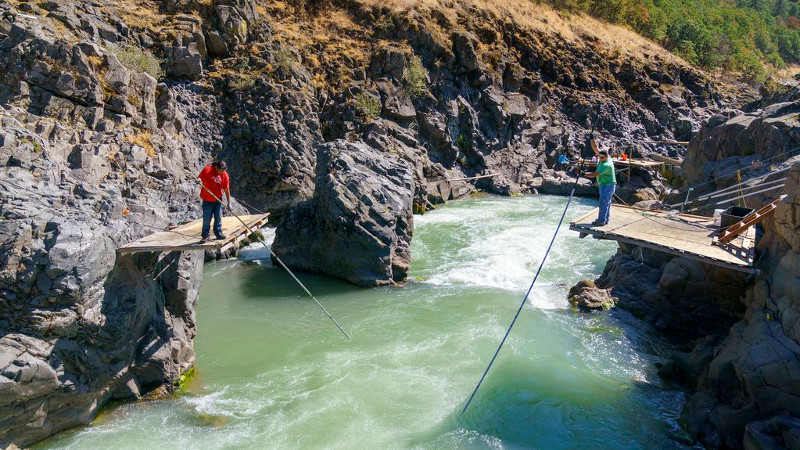Environmental science and its regulation are very complicated. It is important for environmental permit holders to understand both and how their business fit into the natural environments in which they operate.
In these times of climate change and weather event uncertainties being prepared to quickly adapt is vital for your future success. These posts will help you be better positioned to sustain your position and business.
-
Aquatic Biota Are Compositions
Categories: Estimated reading time: 2 minutes
The Clean Water Act (CWA) declares it is the national goal of water quality to provide for the protection and propagation of fish, shellfish, and wildlife and provide for recreation in and on the water. The US Environmental Protection Agency’s(EPA) historic approach is developing a national chemical criterion for chemical elements. There are so many differences in aquatic ecosystems across the US that a more pragmatic approach uses the aquatic biota – benthic macroinvertebrates – to quantify local community’s variability and response to anthropogenic activities. -
Clean Water Act Compliance: Quantifying Ambient Water Quality
Categories: Estimated reading time: 2 minutes
The CWA’s objective of restoring and maintaining the physical, chemical, and biological integrity of the nation’s waters requires ambient condition assessment. In fact, that’s what the CWA tells regulators to do. This article presentation will define ambient conditions and explain how to measure and interpret the data. The basis for setting water quality standards is decades out of date, given our current understanding of environmental data and availability of recently developed statistical models. -
Beneficial uses under the clean water act
Categories: Estimated reading time: 3 minutes
The Clean Water Act’s (CWA) Section 301(m)(2) reads: “The effuuent limitations established under a permit issued under paragraph (1) shall be sufficient to implement the applicable State water quality standards, to assure the protection of public water supplies and protection and propagation of a balanced, indigenous population of shellfish, fish, fauna, wildlife, and other aquatic organisms, and to allow recreational activities in and on the water. In setting such limitations, the Administrator shall take into account any seasonal variations and the need for an adequate margin of safety, considering the lack of essential knowledge concerning the relationship between effuuent limitations and water quality and the lack of essential knowledge of the effects of discharges on beneficial uses of the receiving waters. -
Analyzing aquatic biological data
Categories: Estimated reading time: 2 minutes
Regulatory and resource agencies sometimes require collection of benthic macroinvertebrates and/or fish for baseline data or permit compliance. Too often they do not know what they will do with the data. Correctly analyzing and interpreting these data yields valuable information that operators and regulators can use to make well-informed decisions regarding Clean Water Act compliance. Aquatic biotic communities reflect ambient water quality conditions much better than do chemical concentrations. This is particularly true for benthic macroinvertebrates as they are less mobile than fish. -
Bringing Environmental Policy and Regulation into the 21st Century, Part 4
Categories: Estimated reading time: 3 minutes
The three previous parts of this series described statistical frameworks for objectively analyzing environmental data and explaining where each is appropriate. Correct statistical models applied to environmental concerns are powerful tools for regulators, permit holders, attorneys, and consultants. Results are more technically sound and legally defensible than the commonly used methods. Appropriate statistical analyses can demonstrate compliance with statutory goals and objectives. The Clean Water, Endangered Species, and National Environmental Policy Acts are three statutes affecting natural resource industries. -
Bringing Environmental Policy and Regulation into the 21st Century, Part 3
Categories: Estimated reading time: 3 minutes
The frequentist and likelihood frameworks for analyzing environmental data assume that there is a “true” state of the world represented by the values described by a single hypothesis and its probability distribution. The Bayesian framework assumes that observations are the “truth” while the hypotheses explaining the observations have probability distributions. The Bayesian approach solves many conceptual problems of applying the frequentist approach to environmental data because Bayesian results depend on observations (or measurements) rather than on a range of hypothetical outcomes. -
Bringing Environmental Policy and Regulation into the 21st Century, Part 2
Categories: Estimated reading time: 2 minutes
The null hypothesis/significance testing (NHST) analytical paradigm does not produce answers for environmental regulatory decisions because rejecting the null hypothesis (of no difference between data sets) says nothing about why or by how much they differ. The likelihood paradigm overcomes many of NHST’s problems and can be applied to environmental data when its limitations are understood. The NHST approach tests how well the data fit a single null hypothesis. The Maximum Likelihood Estimation (MLE) approach tests how well multiple hypotheses fit the data and identifies the hypothesis that maximizes the likelihood of explaining the data. -
Bringing Environmental Policy and Regulation into the 21st Century, Part 1
Categories: Estimated reading time: 2 minutes
After 50 years it is time to bring environmental policy and regulatory decision making into the 21st century by applying statistical paradigms that produce technically sound and legally defensible results from environmental data. When federal environmental laws were created, and agencies directed to develop regulations to ensure compliance with them, biologists and ecologists knew less about environmental systems and data analyses than we do today. Scientists had insufficient data for the wide variety of ecosystems covered by these laws, and the only statistical paradigm they knew was the null hypothesis/significance testing (NHST) approach. -
Why Water Quality Improvement Projects Fail
Categories: Estimated reading time: 3 minutes
Water quality matters for humans, livestock, fish and wildlife, and plants including food crops. Too often policies and regulations are ineffective while restoration projects fail to achieve intended goals. The problem is seen in environmental impact assessments, point- and nonpoint-source discharges, and Superfund sites. While some reasons for failure are project-specific, three common and easily avoided reasons are the lack of knowledge about spatial and temporal distribution of the chemical of concern, no information about the causes and amount of variability, and the focus on concentrations at a local point rather than on the entire ecosystem. -
Why environmental data analytical results are challenged (and what to do about it)
Categories: Estimated reading time: 3 minutes
Have you missed a permit compliance monitoring or reporting event and been financially penalized? Has your environmental impact statement approval been delayed by regulators’ paralysis by analysis or by many challenges from project opponents? Has your farm or livestock operation been accused of degrading a nearby water body although you comply with discharge permit monitoring requirements? Have you suffered from the “battle of competing experts” in litigation confusing finders of fact on what your environmental data reveal about the case?






